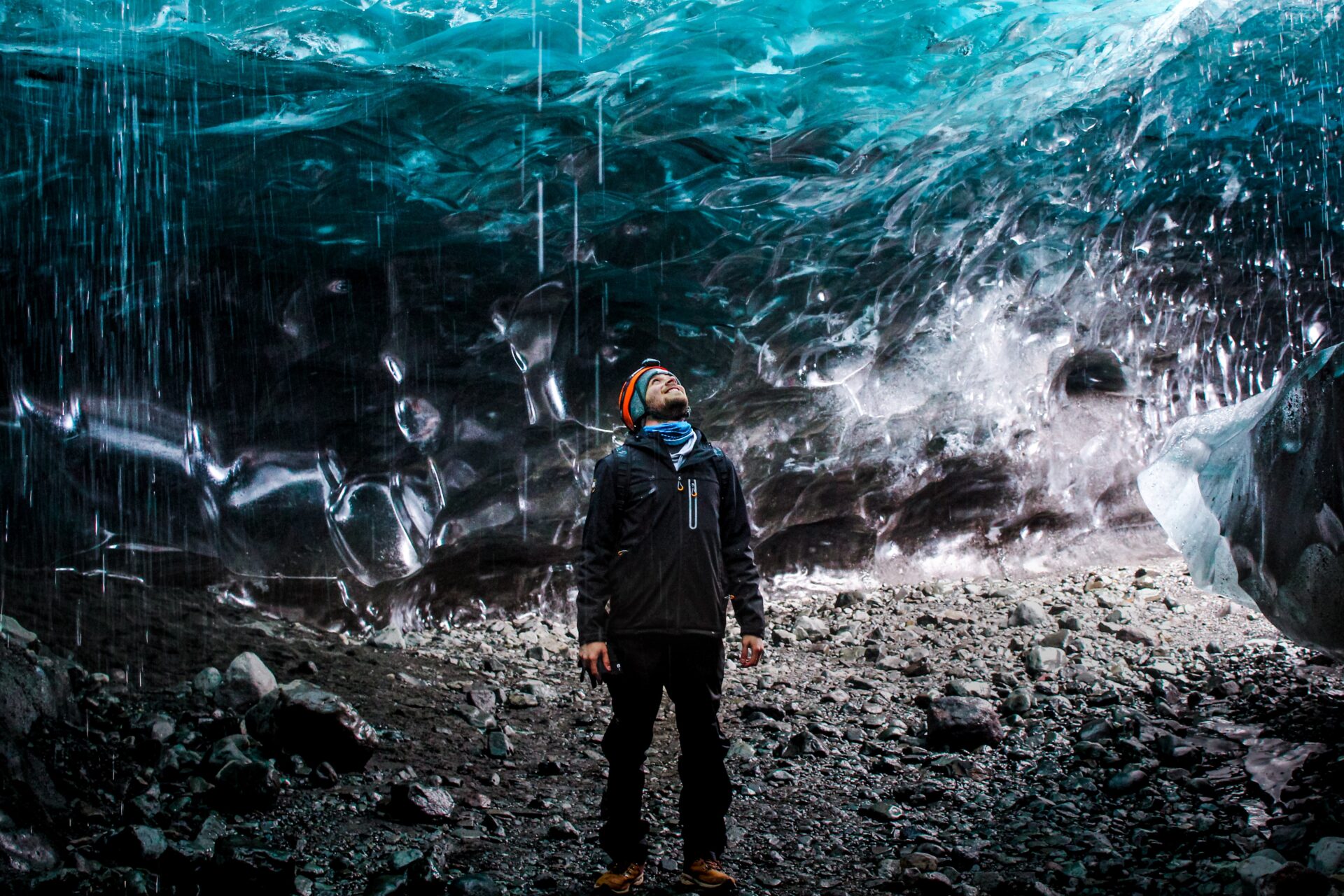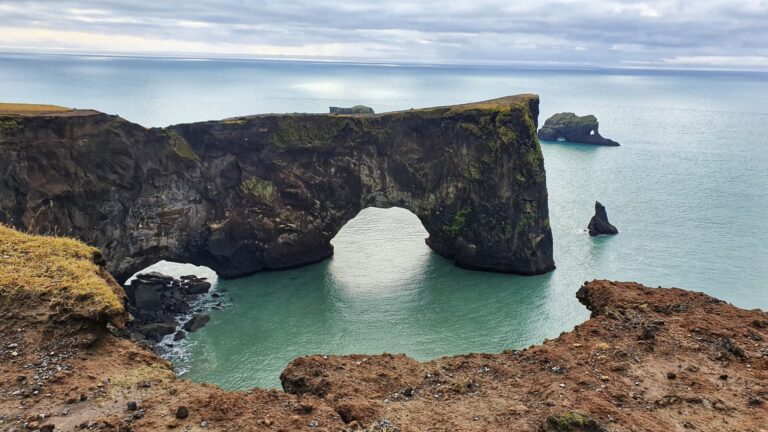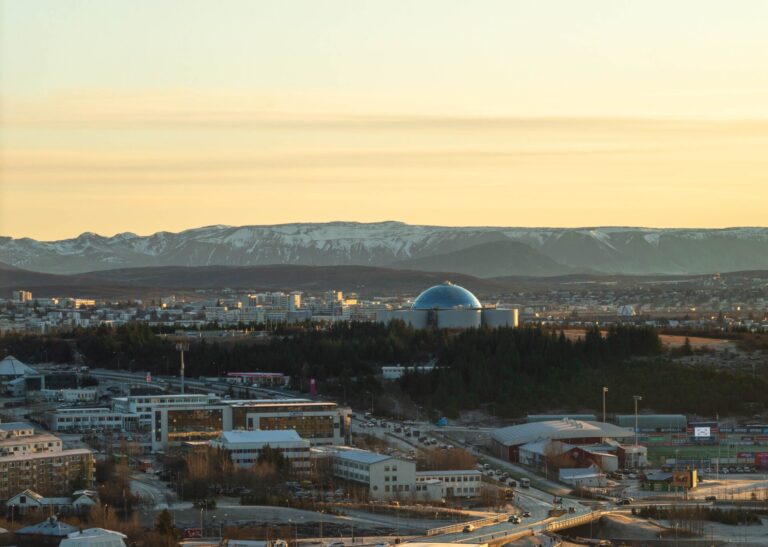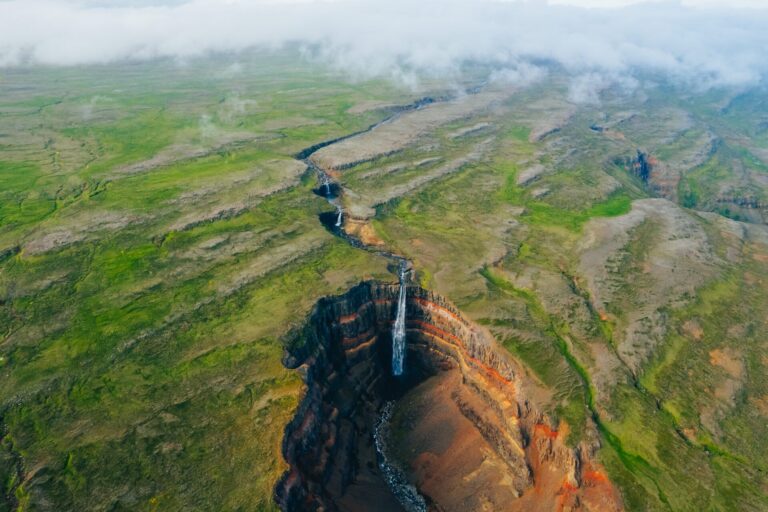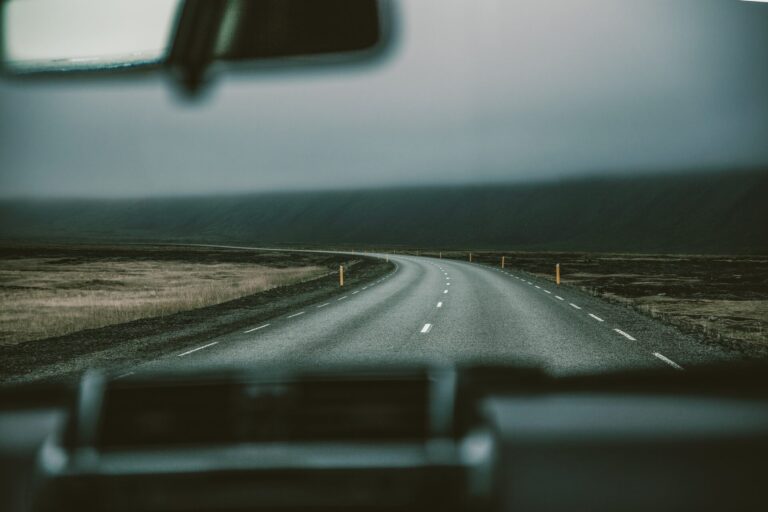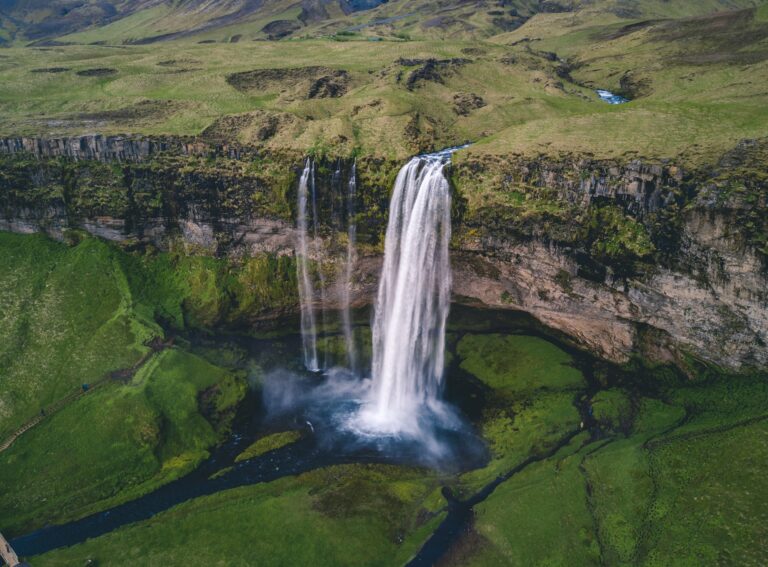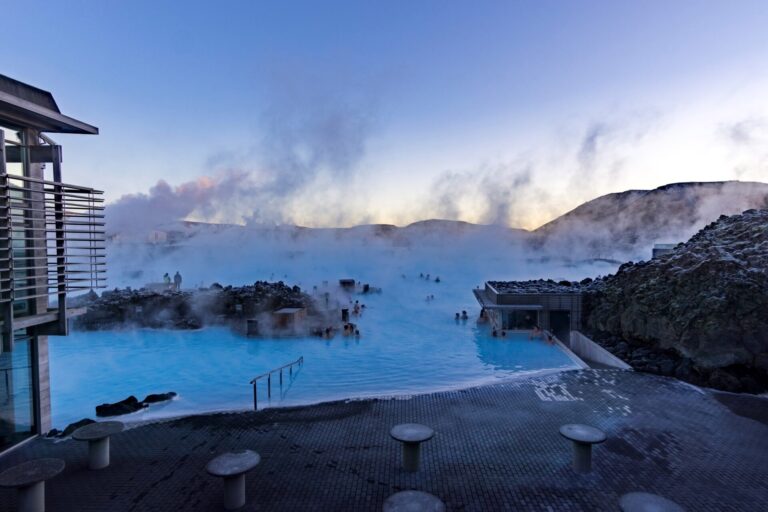Travel Guide to the enormous Vatnajökull glacier in Iceland
Vatnajökull, located in southeastern Iceland, is the largest glacier in Europe, covering an area of over 8,000 square kilometers. It’s a breathtaking natural wonder that attracts thousands of visitors every year, offering stunning views and a range of outdoor activities for adventure seekers. Whether you’re visiting Iceland for the first time or a seasoned traveler, Vatnajökull is a must-see attraction that should be at the top of your Iceland Attractions Map.
In this blog post, we’ll dive into the rich history and geological significance of Vatnajökull and the various activities and tours available for those interested in visiting Iceland’s largest glacier. From hiking and ice climbing to relaxing in nearby hot springs, there’s something for everyone in this unique and captivating part of the world.
So get your Iceland Attractions Map ready and let’s explore the wonders of Vatnajökull together.
Page Contents
About Vatnajökull
Vatnajökull, also known as the Vatna Glacier, is not only the largest glacier in Iceland but also in Europe. This massive ice cap covers an area of over 8,000 square kilometers, and its highest point reaches up to 2,109 meters above sea level. The glacier is situated in southeastern Iceland and is part of Vatnajökull National Park, which is known for its breathtaking scenery, unique flora and fauna, and diverse geological features.
One of the reasons that make Vatnajökull special is its incredible geological history. The glacier was formed during the last Ice Age, which ended approximately 10,000 years ago. Over time, the weight of the ice created deep crevasses and ice caves that have become a popular destination for visitors. The glacier is also surrounded by active volcanoes, including the famous Grímsvötn, which frequently erupts and causes glacial floods, known as jökulhlaups. These natural phenomena have shaped the landscape of the area and make Vatnajökull a unique and dynamic environment.
Vatnajökull also plays a significant role in Iceland’s culture and economy. It has been a vital source of fresh water and hydroelectric power for the country, providing Iceland with approximately 70% of its electricity. The glacier has also become a popular tourist destination, attracting visitors from around the world to experience its natural wonders and participate in various activities, such as glacier hikes, ice climbing, and even exploring ice caves.



Basic facts about Vatnajökull
| Region | Southeast Iceland |
| Hight | 2,109 meters |
| Size | Over 8,000 square kilometers |
| Depth | Up to 1,000 meters |
| Type | Ice cap glacier |
| GPS Coordinates | 64.4167° N, 16.8000° W |
| Different Names | Vatna Glacier, Vatnajökull Glacier |
How to pronounce Vatnajökull?
Vatnajökull is a word of Icelandic origin, and its pronunciation can be a bit tricky for non-Icelandic speakers. Here’s a rough guide to help with the pronunciation:
- Vatnajökull is pronounced “vaht-nah-yuh-kuhtl” in Icelandic.
- The “v” is pronounced like the English “v”, while the “t” is pronounced like the English “t”.
- The “j” is pronounced like the English “y”, while the two “ll’s” at the end are pronounced like a breathy “tl” sound.
- The stress in the word is on the second syllable (nah), so it should be pronounced with more emphasis.
It’s worth noting that Icelandic is a tonal language, so the intonation can also affect the pronunciation. However, the above guide should give a good idea of how to say Vatnajökull.
Legends around Vatnajökull
There are several legends and myths surrounding Vatnajökull, which is an iconic and awe-inspiring glacier in Iceland. One such legend concerns the giantess Skálmöld, who was said to have lived beneath Vatnajökull.
According to the legend, Skálmöld was a fearsome giantess who terrorized the nearby villages and demanded tribute from the local farmers. One day, a brave farmer named Oddur challenged Skálmöld to a contest of strength, hoping to free his people from her tyranny. The two engaged in a fierce battle, but in the end, Oddur emerged victorious, and Skálmöld was forced to flee beneath Vatnajökull.
The origin of this legend is unclear, but it is likely rooted in the rich folklore and mythology of Iceland, which is filled with stories of giants and magical creatures. Vatnajökull is also home to several active volcanoes, which have contributed to the mystique and allure of the glacier for centuries. Today, visitors to Vatnajökull can explore its stunning ice caves, marvel at its breathtaking beauty, and perhaps even imagine the fierce giantess Skálmöld still lurking beneath its icy depths.
How to reach Vatnajökull (Map)
Fortunately, there are several ways to get to the glacier, depending on your preference and budget.
By bus: One of the easiest ways to get to Vatnajökull is by bus. Several bus companies offer regular tours and transfers to the glacier, departing from major cities and towns such as Reykjavik, Akureyri, and Höfn. These tours often include stops at other popular attractions in the area, such as Jökulsárlón glacier lagoon and the Diamond Beach.
By car: Another popular way to get to Vatnajökull is by car. Iceland has a well-developed road network, and the Ring Road (Route 1) passes right by the glacier. Visitors can rent a car in Reykjavik or other major cities and drive to Vatnajökull themselves. It’s important to note, however, that the road conditions can be challenging in winter, so it’s important to check the weather and road conditions before setting out.
Other alternatives: There are also other alternative ways to get to Vatnajökull, such as hiring a private driver or taking a helicopter tour. Private drivers can be expensive, but they offer a more personalized experience and can take visitors to some of the more remote parts of the glacier. Helicopter tours, meanwhile, offer a unique perspective and breathtaking views of the glacier and surrounding landscapes, but they can also be quite pricey.
Regardless of how you choose to get to Vatnajökull, it’s important to plan ahead and make sure you have adequate clothing and equipment, as well as food and water, as the area can be quite remote and isolated. With a little planning, however, a visit to this stunning glacier is sure to be a highlight of any trip to Iceland.
When to visit Vatnajökull
The best time to visit Vatnajökull depends on your interests and preferences. If you’re looking for mild and pleasant weather with long days, then summer (June to August) is the ideal time to go. During this season, you can explore the area, go hiking, take glacier walks, or enjoy a boat tour on the Jökulsárlón glacier lagoon.
However, if you want to experience a magical winter wonderland, then visiting from November to March is the best option. The glacier is covered with snow and ice, creating an enchanting environment where you can engage in activities such as ice caving, glacier hiking, snowmobiling, or even witnessing the Northern Lights.
When it comes to the best time of day to visit Vatnajökull, it depends on your goals. Early morning or late evening, known as the “golden hour,” provides excellent light for photography. Midday can be a good option if you want to go hiking or take a glacier walk when the weather is usually milder.
Regardless of the time you choose to visit, it’s essential to prepare for Iceland’s unpredictable weather and dress appropriately for the conditions. With proper planning and flexibility, a visit to Vatnajökull is sure to be a highlight of your trip to Iceland.
Accommodations near Vatnajökull
If you want to stay close to Vatnajökull, there are several options in the surrounding area, including Höfn, Skaftafell, and Kirkjubæjarklaustur. These towns offer a range of accommodations, from hotels to guesthouses, camping grounds, and apartments.
Höfn is the largest town in the region, and it’s located just 1.5 hours away from Vatnajökull. There, you can find a variety of accommodations, from budget-friendly guesthouses to luxury hotels, and everything in between. Höfn is a popular spot for visitors due to its proximity to the glacier lagoon, Jökulsárlón, and other nearby attractions.
Skaftafell is another excellent option, located in the Vatnajökull National Park. This area is known for its stunning landscapes, hiking trails, and outdoor activities. There are several accommodations in Skaftafell, including camping grounds, cottages, and hotels.
If you prefer to stay closer to Reykjavik, Iceland’s capital city, there are several accommodations options there as well. Reykjavik is about 5 hours away from Vatnajökull, so it’s not as close as the surrounding towns, but it still provides a great base for exploring the region. Reykjavik offers a range of accommodations, from hostels and guesthouses to luxury hotels and apartments.
What to do at Vatnajökull
Visitors to Vatnajökull Glacier can enjoy a variety of activities, both on the glacier itself and in the surrounding area. Here are some popular options:
- Glacier hiking: There are guided hikes available for visitors to explore the glacier, either on a half-day or full-day excursion. This is a great way to experience the breathtaking beauty of the glacier and learn about its formation.
- Ice caving: During the winter months, ice caves form within the glacier, and visitors can explore these natural wonders with a guide. The blue-hued ice formations are truly awe-inspiring.
- Glacier lagoon boat tours: Jökulsárlón is a nearby glacier lagoon that offers boat tours, allowing visitors to get up close to the floating icebergs.
- Hot springs: There are several hot springs in the area, including the famous Blue Lagoon, which is about a 4-hour drive from Vatnajökull. Relaxing in the warm, mineral-rich waters is a perfect way to unwind after a day of hiking or exploring.
Other attractions near Vatnajökull
There are several other attractions near Vatnajökull that are worth a visit for photographers and nature enthusiasts. One of the most popular attractions is Jökulsárlón Glacier Lagoon, which is just a short drive away. This lagoon is known for its stunning views of icebergs floating in crystal-clear water and it’s a great spot to take pictures or even a boat tour.
Another popular attraction nearby is the Diamond Beach, which is located next to Jökulsárlón Glacier Lagoon. This beach is named after the sparkling ice fragments that wash up on its shores, which look like diamonds in the sunlight. Photographers love to capture the contrast of the black sand beach and the ice fragments.
Additionally, visitors can explore the Skaftafell Nature Reserve, which offers a variety of hiking trails with breathtaking views of the surrounding glaciers, waterfalls, and mountains. The reserve is located about an hour’s drive west of the Vatnajökull glacier.
Lastly, for those interested in Icelandic culture, the nearby town of Höfn offers a unique glimpse into the local fishing industry and is known for its delicious seafood. The town also has a small museum that provides insights into the history of the region.
We also created an Iceland Attractions Map to help you plan your trip and find your way around the country. It includes information on popular attractions, hidden gems, and practical information such as transportation, parking, and Airbnb options. Below our favorite spots!
- Seljalandsfoss Waterfall: a 60 meters tall waterfall, part of Seljalands River.
- Kerid Crater lake: a lake inside a volcanic crater, surrounded by colorful volcanic rock
- Fjadrargljufur Canyon: a 100 meters deep and 2 kilometers long canyon, formed by erosion from the Fjadrárgljúfur River, known for its rock formations and colorful walls.
What to pack when visiting Vatnajökull
Here are some essential items that visitors should consider packing when planning a trip to Vatnajökull:
- Warm clothing: As the glacier is located in a cold region, it is essential to pack warm clothing. This includes a good quality jacket, thermal underwear, woolen socks, gloves, and a hat.
- Hiking shoes or boots: As the glacier involves walking on uneven terrain, visitors should wear sturdy and comfortable shoes or boots with a good grip.
- Waterproof clothing: As Iceland is known for its unpredictable weather, it is advisable to pack waterproof clothing such as a raincoat, rain pants, and waterproof boots.
- Sunglasses and sunscreen: As the sun can be quite bright reflecting off the ice, it is important to bring sunglasses to protect your eyes. Sunscreen is also essential to protect your skin from the harsh sun rays.
- Camera and extra batteries: Vatnajökull offers some breathtaking views and photo opportunities, so visitors should bring a camera and extra batteries or a portable charger.
- Backpack: A small backpack is useful for carrying essentials such as water, snacks, and extra layers of clothing.
- Map and guidebook: Visitors should bring a map and guidebook to help navigate around the glacier and learn more about its history and attractions.
Photographing Vatnajökull
Drones can be a great tool for capturing aerial views of the glacier, but it’s important to follow the rules and regulations set by the Icelandic Transport Authority. Before flying your drone, make sure to check the latest rules and obtain the necessary permits. Some areas may be restricted, so it’s always best to double-check before taking off.
When it comes to camera gear, a wide-angle lens is a must for capturing the expansive views of the glacier. A sturdy tripod is also essential for keeping your camera steady in the often windy conditions. A polarizing filter can help reduce glare and enhance colors, while a neutral density filter can be used to slow down the shutter speed and create a sense of motion in the moving water.
For settings, it’s recommended to shoot in manual mode so that you have full control over your exposure. Start by setting your aperture between f/8 and f/16 to ensure a sharp and detailed image. Adjust your shutter speed and ISO accordingly based on the lighting conditions. To capture the dynamic range of the landscape, consider bracketing your shots and creating an HDR image in post-processing.
The best time to photograph Vatnajökull depends on what kind of images you’re looking to capture. In the summer months, the glacier may have more visible crevasses and ice formations, while in the winter, the snow and ice can create a striking monochromatic landscape. Golden hour (the hour after sunrise and the hour before sunset) can also provide beautiful lighting for your shots. However, keep in mind that weather conditions can change quickly in Iceland, so always be prepared for unexpected weather changes.

